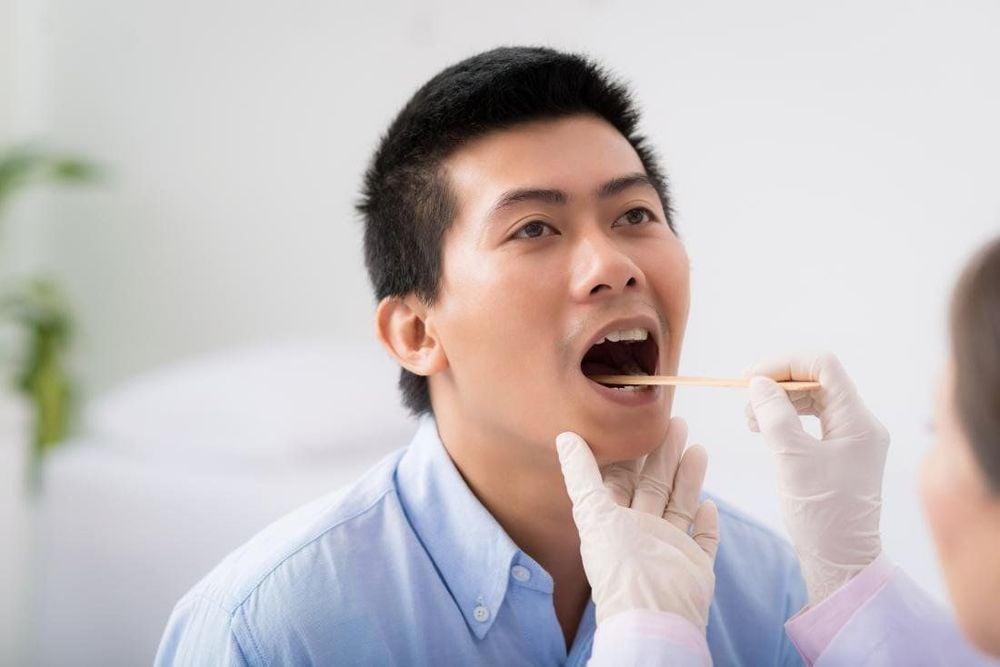This is an automatically translated article.
The area of the oropharynx and nasopharynx is the place where many microorganisms reside because it is the intersection of the digestive and respiratory tracts. Therefore, testing nasopharyngeal fluid to look for bacteria will help doctors detect the presence of pathogenic bacteria when the patient's immune system is weakened or mucosal areas are damaged.
1. When is the test for nasopharyngeal fluid culture indicated?
Test of pharyngopharyngeal fluid culture will be performed on the following subjects:
Patients with symptoms such as: burning pain in the oropharynx, swelling of the pharyngeal mucosa or swollen neck lymph nodes,... Manifestations of upper respiratory tract infection (tonsillitis) Patient has symptoms of lower respiratory tract infection (pneumonia, bronchitis) Serves to determine whether the patient is infected with bacteria in pharynx or not when the patient has sore throat, red swollen mucosa, edema, tonsillitis, purulent or pseudo-purulent membrane or tongue edema.

Hình ảnh bệnh nhân bị viêm amidan
2. How to get nasopharyngeal fluid for testing?
Specimens must be taken before the patient can use systemic antibiotics. Take the patient sample according to the following steps:
Identify the patient: correctly identify the patient, write the information on the swab tube and explain to the patient about the technical procedure. Have the patient sit down in a chair, Tilt the head back slightly and open the mouth wide, can ask the patient to say A while opening his mouth for ease of manipulation Use tongue pressure on the patient's tongue to expose the oropharynx Use a sterile cotton swab to wipe 3 places : on both sides of the tonsils and the back of the throat, avoid touching the tongue, teeth, and the inside of the cheeks as well as the uvula to avoid stimulating the patient's nausea reflex. Pay special attention to taking samples of areas with redness or burning pus. Put a cotton swab in a sterile tight-cap tube and send it to the laboratory. Test for a culture test to determine the cause of the disease:
The medium used is blood agar. and chocolate agar Incubation conditions: from 35-37 °C, an atmosphere of 5-7% CO2 and a time of 15-18 hours. shape, size, color, gloss, dryness, fat, uneven margins, hemolysis, and odor Gram staining will help determine the shape, arrangement, and staining properties of the bacteria.

Lấy dịch tỵ hầu để cấy xét nghiệm
3. Test results of nasopharyngeal culture test
Bacteria are considered to be the cause of disease when the colony area is from zone 3 or more. The group of diseases with bacteria growing in zone 4 was significantly higher than the control group.
Common resident bacteria: Neisseria, Micrococcus, gram (-), beta-hemolytic streptococcus,...
Common pathogenic bacteria are: Moraxella catarrhralis, H. influenza, S. aureus, S. pneumonia, P. aeruginosa,...
Test of pharyngeal juice culture helps to timely diagnose many diseases related to the nose and throat, the results are very accurate. As soon as you have unpleasant symptoms of your nose and throat, you should immediately go to a medical center for early examination and treatment. To register for examination and treatment at Vinmec International General Hospital, you can contact Vinmec Health System nationwide, or register online HERE.
MORE:
How to treat and care for children with upper respiratory tract infections What are the parts of the upper respiratory tract? When does a child with pneumonia need to be hospitalized?













